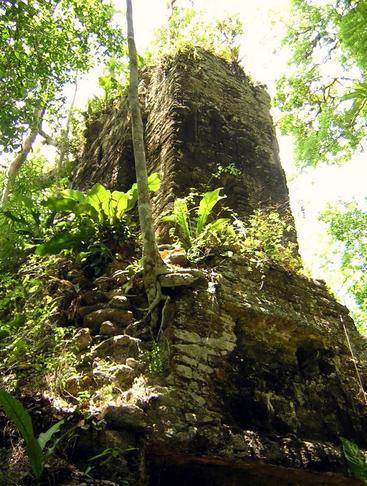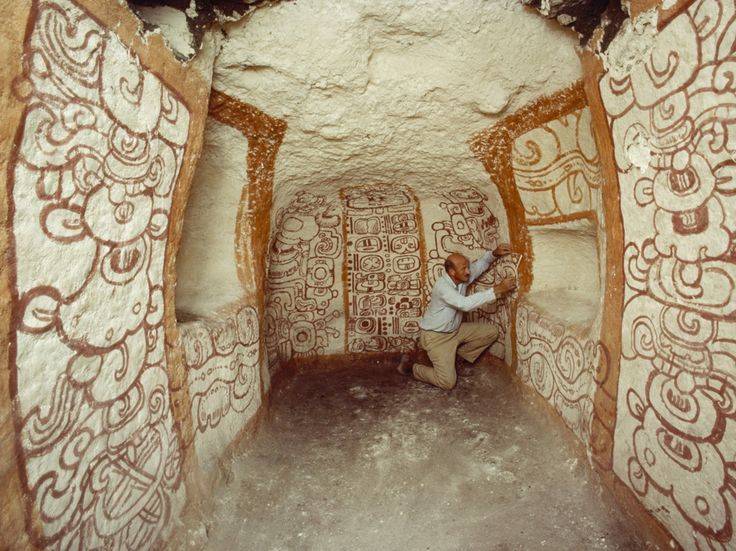Rio Azul: A Glimpse into the Early Classic Maya Civilization
Rio Azul, translating to “Blue River” in Spanish, is an archaeological site of paramount importance located in the dense tropical rainforests of Guatemala, near the borders with Belize and Mexico. This site, nestled within the Rio Azul National Park and part of the Maya Biosphere Reserve, offers a unique window into the Maya civilization during the Early Classic period, approximately between 250 and 600 AD.
Get your dose of History via Email
Historical Overview
The site of Rio Azul was first occupied during the Middle Pre-Classic period (800-300 BC), with monumental architecture emerging at the onset of the Late Pre-Classic period (300 BC-250 AD). Its zenith was reached in the Early Classic period when it became a significant player in the complex socio-political landscape of the Maya civilization.
In the late 4th century AD, Rio Azul came under the dominion of the powerful city-state of Tikal, following a military conquest that saw the installation of a new ruler, possibly a son of Tikal’s king, Yax Nuun Ayiin I. This event marked a pivotal moment in Rio Azul’s history, aligning it with Tikal’s expansive trade networks and political ambitions, particularly against its rival, Calakmul.
The influence of Teotihuacan, a central Mexican city-state, is evident in Rio Azul’s archaeological record. Inscriptions dating to 393 AD reference Siyaj Kak, a Teotihuacan warlord, and architectural styles, as well as ceramic types associated with Teotihuacan, have been documented at the site.
However, the city experienced a significant decline around the 6th century AD, coinciding with Tikal’s defeat by Calakmul. Although there was a brief resurgence during the Late Classic period (600-900 AD), Rio Azul was ultimately abandoned by 880 AD.

Archaeological Significance
Rio Azul is renowned for its elaborately painted tombs, which have provided invaluable insights into Maya funerary practices and societal structure during the 5th century. Unfortunately, these tombs are not accessible to the public due to their fragile state and the risk of looting.
The site also boasts a sophisticated system of hydraulics, including dams, channels, and canals, underscoring the Maya’s advanced engineering capabilities. This system was crucial for the city’s survival and prosperity, given its strategic location along the Rio Azul.
Exploration and Excavation
The first reports on Rio Azul emerged in 1962, but it was not until the 1980s that extensive archaeological investigations were undertaken, primarily in response to widespread looting. These efforts have led to the discovery of over 700 structures, including a ball court, stelae, altars, and more than 30 tombs, along with numerous residential and agricultural areas.
One of the most significant finds is Tomb 12, located beneath Temple AII, which features wall paintings depicting cardinal direction glyphs and glyphs relating to the Sun, Moon, Darkness, and Venus. This tomb is associated with a ruler named Six Sky, providing a rare glimpse into the identity of Rio Azul’s elite.
Modern Access and Conservation
Access to Rio Azul is challenging, requiring a four-wheel-drive vehicle during the dry season and is best undertaken through organized tours. The site’s remote location within a national park and biosphere reserve offers some protection against looting and vandalism, but the lack of on-site services and accommodations means that visitors must be self-sufficient.
Conclusion
Rio Azul serves as a testament to the complexity and richness of the Maya civilization during the Early Classic period. Its architectural, hydraulic, and funerary remains offer critical insights into the socio-political dynamics, trade networks, and cultural exchanges that shaped the Maya world. Despite the challenges posed by its remote location and the threat of looting, ongoing archaeological efforts continue to unveil the mysteries of this ancient city, contributing to our understanding of Pre-Columbian Mesoamerica.

